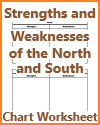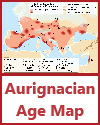| Protest Movements Reading with Questions |
|---|
| www.studenthandouts.com ↣ Social Studies ↣ Civics ↣ Government Reform |
Protest movements have played a significant role in shaping American government and driving social and political change throughout U.S. history. These movements have often been catalysts for legislative reforms, policy changes, and shifts in public opinion. Here are some ways in which protest movements have influenced American government. The Civil Rights Movement of the 1950s and 1960s, led by figures like Martin Luther King Jr., aimed to end racial segregation and discrimination. It played a pivotal role in the passage of civil rights legislation, including the Civil Rights Act of 1964 and the Voting Rights Act of 1965, which outlawed racial segregation, discrimination, and voting barriers. These laws had a profound impact on dismantling Jim Crow laws and advancing civil rights for African Americans.
The Civil Rights Movement of the 1950s and 1960s, led by figures like Martin Luther King Jr., aimed to end racial segregation and discrimination. It played a pivotal role in the passage of civil rights legislation, including the Civil Rights Act of 1964 and the Voting Rights Act of 1965, which outlawed racial segregation, discrimination, and voting barriers. These laws had a profound impact on dismantling Jim Crow laws and advancing civil rights for African Americans.The Women's Suffrage Movement, which spanned from the 19th century to the early 20th century, advocated for women's right to vote. It led to the ratification of the 19th Amendment to the U.S. Constitution in 1920, granting women the right to vote in federal elections. Labor movements and workers' strikes in the late 19th and early 20th centuries played a role in shaping labor laws and workers' rights. The labor movement contributed to the establishment of labor protections, workplace safety regulations, and the right to collective bargaining. The anti-Vietnam War protests during the 1960s and 1970s were influential in raising public awareness about the war's costs and consequences. They contributed to the eventual withdrawal of U.S. troops from Vietnam and a shift in U.S. foreign policy. Protests and grassroots movements in the 1960s and 1970s, such as the environmental activism that led to the first Earth Day in 1970, contributed to the creation of major environmental laws, including the Clean Air Act, Clean Water Act, and the establishment of the Environmental Protection Agency (E.P.A.). The LGBTQ+ rights movement, which gained momentum in the late 20th century and continues today, has led to significant legal changes, including the decriminalization of homosexuality, the end of "Don't Ask, Don't Tell" in the military, and the legalization of same-sex marriage through the Supreme Court's ruling in Obergefell v. Hodges (2015). Native American rights movements, including the American Indian Movement (A.I.M.), have called attention to issues like tribal sovereignty, land rights, and cultural preservation. These movements have influenced government policies, such as the Indian Self-Determination and Education Assistance Act of 1975. Protests and advocacy by immigrant rights organizations have drawn attention to immigration policy issues, which has resulted in legislation such as D.A.C.A. (Deferred Action for Childhood Arrivals) and the D.R.E.A.M. Act. These movements have shaped discussions on immigration reform. The Black Lives Matter (B.L.M.) movement emerged in 2013, following an acquittal in the killing of teenager Trayvon Martin. The movement is in response to police violence and systemic racism. It has led to a renewed national conversation about policing, criminal justice reform, and racial equity, with some cities implementing police reform measures and changes to law enforcement policies. Protests and advocacy by groups like March for Our Lives have influenced public discourse on gun control and gun violence prevention. These movements have led to legislative efforts at both the state and federal levels. In each of these cases, protest movements have raised awareness of critical issues, mobilized public support, and pressured policymakers to address the concerns and demands of the movement participants. While protest movements alone may not always lead to immediate policy changes, they can serve as catalysts for political action, public debate, and eventual government reforms. Answer the following questions based on the text and your knowledge of social studies. 1. Which of the following was a leader in the Civil Rights Movement of the 1950s and 1960s? c. Martin Luther King, Jr. 2. The Nineteenth Amendment became law in _____. b. 1920 3. List three achievements of the labor movement. Establishment of labor protections, workplace safety regulations, and the right to collective bargaining 4. What 2015 Supreme Court decision legalized same-sex marriage? Obergefell v. Hodges 5. AIM is an acronym for what? American Indian Movement 6. Describe a protest movement that has happened (or is happening) in your area. Answers will vary. Click here to print. |
 |  |  |  |  |  |
| www.studenthandouts.com ↣ Social Studies ↣ Civics ↣ Government Reform |








